Join More Than 50,000+ Subscribers and get latest camera news and rumors
NEW CAMERA VIDEOS ON YOUTUBE
|
By admin, on September 21st, 2017
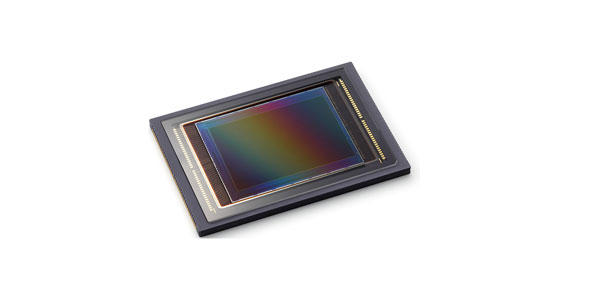
New Camera Exclusive: Yes, Finally Canon is working on its own BSI CMOS sensor, you must know that Sony A7 R2, Sony RX1R2 and Sony A9 are the only 3 full frame cameras in the world that uses a FF BSI CMOS stacked sensor.
According to reports, Nikon D850 BSI CMOS sensor was developed by Sony and designed by Nikon itself.
Canon and doesn’t make its own BSI CMOS sensor. According to a report published in business wire(2016) Canon is the fourth largest vendor in CMOS sensor market with 7% of total share, Sony is leading the industry and covering more than 27% of total market share.
One of the biggest problem is Canon doesn’t make its own BSI CMOS sensors, (backside illuminated sensor) Sony and Omni Vision are the two leading sensor makers who are making BSI CMOS sensors for smartphones and cameras, Samsung is also has its own version of BSI CMOS sensor as well as a ISO cell sensors used inside flaship is a Smartphone and other smart devices.
Canon Patent BSI CMOS Sensor
Canon is working on its own version of BSI CMOS sensor. That clearly indicates that we will soon see new versions of DPAF BSI CMOS AF sensors soon. Take a look at the translated version of Patent documents
Patent Details
Patent Pub Date: 2017-06-15
Bibliographic data: US2017170230
Patent no: US201715442940 20170227
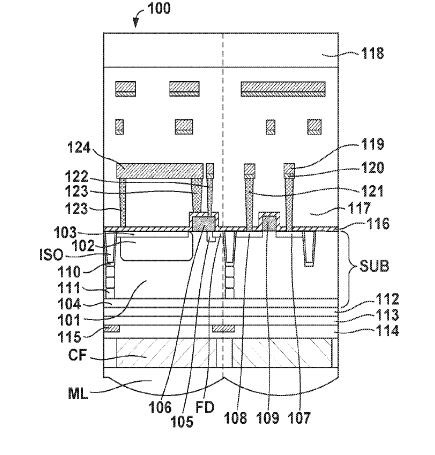
Take a look at the translated text below
A back-side illumination image capturing apparatus includes a semiconductor substrate having a first surface for receiving incident light and a second surface located on the opposite side as the first surface, and including a photoelectric conversion portion, and a gate electrode disposed above the second surface. The apparatus further includes a first insulating layer disposed above the second surface of the semiconductor substrate, an interlayer insulation film disposed on the first insulating layer, a contact plug connected to the gate electrode, and a light-cutting portion for cutting light, of the incident light, that has passed through the photoelectric conversion portion. The light-cutting portion passes through at least part of the interlayer insulation film. The first insulating layer is located between the light-cutting portion and the semiconductor substrate.
See additional images
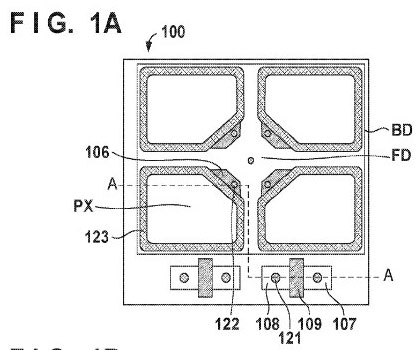
We are the world first website to bring this news to you.
This not the first time – We have also published Canon BSI CMOS patent January 23rd, 2012
Nikon isn’t too far, they are also working on BSI CMOS Sensor, having similar AF system as of Canon. See here
source
By admin, on August 25th, 2017
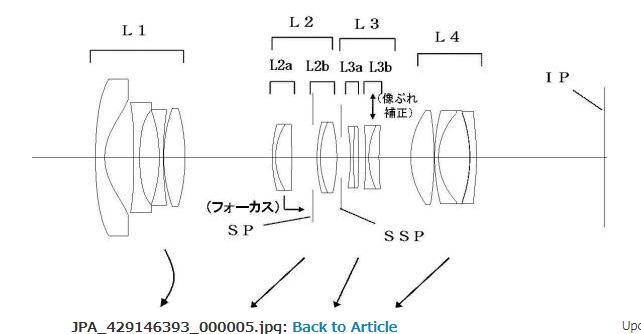
Canon filed a patent for 15-43mm F2-4 Lens for APS-C compact camera. The sensor used inside the Canon G1X Mark III camera is just silently smaller than the APS-C cameras, and if you look at the focal length of the lens it’s 15-43mm whereas the current Canon G1X Mark II camera uses lens of 24-120mm focal length, So even if we place the same lens over G1X Mk II camera we will get approx 20-50mm focal length (due to crop factor). it is very clear that the same lens can also used for the G1X series without altering the sensor size of the machine.
Publication date] August 24, Heisei 20 (2017.8.24)
Patent application title: ZOOM LENS AND IMAGING DEVICE HAVING THE SAME
- Zoom ratio: 2.74
- Focal length: 15.65 29.18 42.90
- F No.: 2.06 2.99 4.00
- Half angle: 41.12 25.09 17.66
- Image height: 13.66 13.66 13.66
- Back focus: 8.52 8.01 7.20
PS: In general camera companies do lot of patent and only some of them turn into reality.
Stay with us on FACEBOOK | TWITTER | GOOGLE+ to get live news + rumors 24X7
By admin, on August 19th, 2017
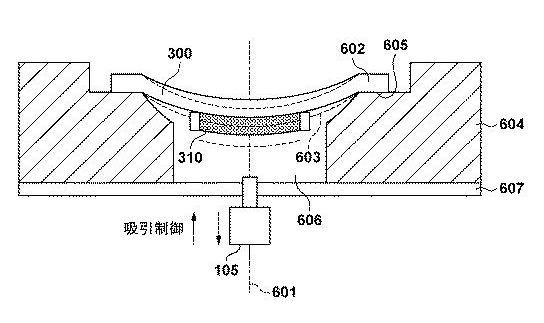
Canon patent a one more hybrid image sensor, the image sensor shape can be adjusted based on needs. We have published the first Curve Hybrid Sensor patent on December 30th, 2016 and second on December 9th, 2016. Both patent shows flexible curve sensor .
The level of curvature in the sensor changes to accept traditional as well as curved lenses. Hence you can use both type of lenses on the camera, , traditional lenses those are made for flat sensor can be used without an issue as well as lenses made for curve sensor camera.
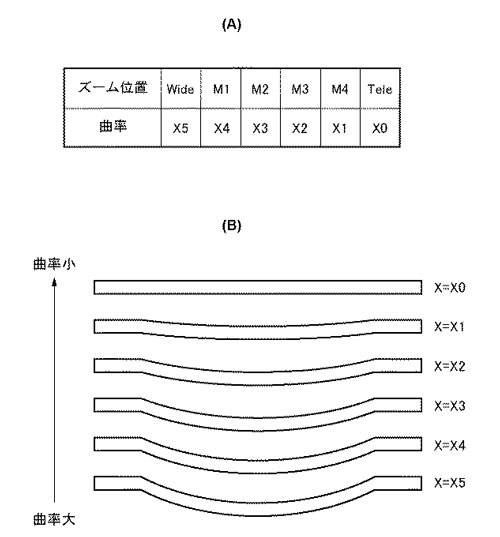
We have seen lot curve sensor patent form Canon itself and here is the list
Below you have the links of the Canon curve sensor patents #1, #2 and #3
STAY WITH ON FACEBOOK | TWITTER | GOOGLE+ to get live news + See all Canon Rumors 24X7+
Via
By admin, on August 4th, 2017
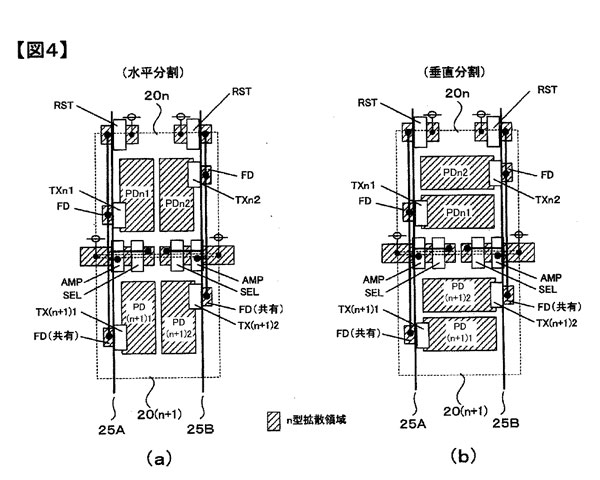
Latest Patent document reveals that Nikon is working on Hybrid Sensor. The patent document surfaced over the web isn’t new and shows of date of 2012. However, that gives that gives a clear indication that Nikon is willing to implement Hybrid sensors in DSLRs and Mirrorless in near feature.
We have published a more interesting patent a year ago Nikon Patent – Hybrid Sensor Pixels to Capture Single Shot HDR
Stay with us on FACEBOOK | TWITTER | GOOGLE+ to get live news + rumors 24X
source
By admin, on August 1st, 2017
Thanks to Nomen Nescio for citing us list of Canon Hybrid and Dual Pixel AF Patents. Canon done a lot of work in the past regarding Hybrid and DPAF sensors. The time frame when lot of patent surfaced related to new system was from 2001 to 2006. Take a look at the list of patents.
HYBRID CAMERA AND CONTROL METHOD OF THE SAME
1. Patent – Hybrid Sensor
First patent spotted for Hybrid sensor. Dated 2001-12-21
Subject: HYBRID CAMERA AND CONTROL METHOD OF THE SAME
Application number: JP20000171942 20000608
ID – JP2001350193 (A)
Date: 2001-12-21
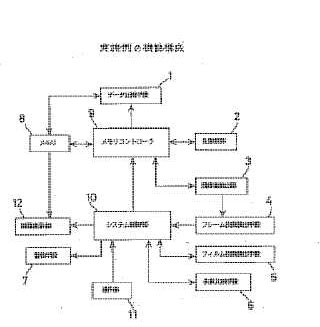
Translated Details: To prevent such a situation that electronic system photographing cannot be performed due to the reduction of the remaining quantity of a recording medium even though the frames of a silver halide photographic film remain, in a hybrid camera capable of simultaneously performing electronic still photographing and silver halide photographing using the silver halide film. SOLUTION: The number of recordable frames is detected by a frame detecting means 4 based on the remaining quantity of the recording medium 2 detected by a remaining quantity detecting part 3, besides, the number of film frames capable of performing the silver halide photographing is detected by the means for detecting the number of film frames. And, the detected number of the frames is compared with the number of the film frames by a frame number comparing means 6, and in the case the number of the frames is smaller than the number of the film frames, a warning is displayed. Besides, in the case the number of the frames is smaller than the number of the film frames, image data are compressed by a data compressing means 1 and then recorded on the recording medium 2.
2. Canon First Hybrid #2
Canon first hybrid sensor patent was surfaced on Feb month of 2003. The patent sketch and translated details do give us lot of information.
ID – JP2003043344 (A)
Date: – 2003-02-13
Application number: JP20010230008 20010730
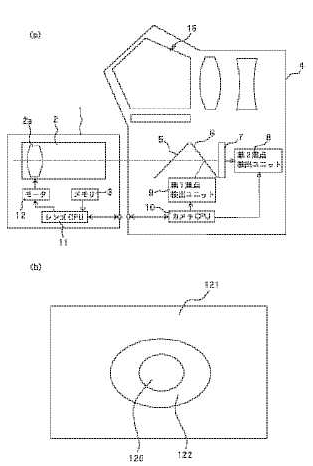
Translated details: hybrid system not being made by a mounted photographic lens, in the case of performing focus detection in the hybrid system. SOLUTION: This camera, to/from which a photographic lens device 1 can be attached/detached and which can detect the focusing state of the photographic lens device in a focus detection area provided within a photographic image plane, is equipped with 1st and 2nd focus detection means 9 and 8 detecting the focusing state by a detecting system different from each other, and a control means 10 for selecting which focus detection means out of the 1st and the 2nd focus detection means is to detect the focusing state in the focus detection area, based on information concerning the optical characteristics of the photographic lens device acquired from the photographic lens device.
3. More (Improved) Hybrid Sensor Patent
Before we being to show you the next patent you must know that Canon’s Ultrasonic Motor (USM) was the world’s first lens-based motor to harness ultrasonic oscillation energy. So, sometime it is also called as oscillatory type motor. In the patent description below you will find oscillatory type / USM motor many times.
ID – JP2003084191 (A)
Application number: JP20010275581 20010911
Date: 2003-03-19
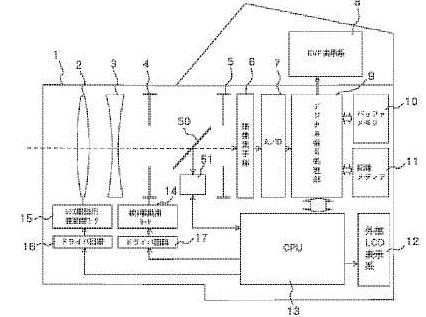
Translated details: To overcome the following problem; when driving a lens by an oscillatory type motor, starting up the motor is delayed even if introducing a hybrid system AF, then, it takes a time to focus on a object. SOLUTION: In the second step drive control of the oscillatory type motor (driving a photographic optical system with fine resolution) by generating the traveling-wave oscillation of the oscillating body of the oscillatory type motor 15 based on the detection results by second focus detecting means 6 and 13 using a contrast detection system after performing the first step drive control of the oscillatory type motor (driving the photographic optical system with rough resolution) by generating the traveling-wave oscillation of the oscillating body of the oscillatory type motor 15 based on the detection result by a first focus detecting means 51 using a phase difference detecting system, an intermediate control of generating the standing-wave oscillation of the oscillating body before starting the second step drive control is performed after finishing the first step drive control.
4. Canon Dualpixel CMOS AF Patent
In the patent description you can clearly read that the camera calculates amount of lens drive to achieve focus. This type of method is used by Canon DPAF sensor based cameras today.
ID: JP2004109690 (A)
Date: 2004-04-08
Application number: JP20020274003 20020919
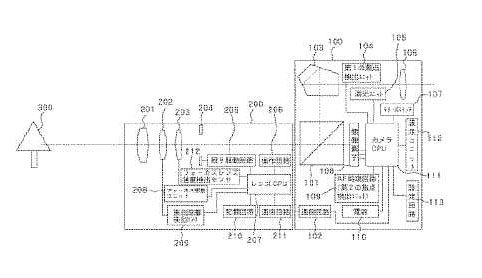
Translated Details: A camera system has a first focus detecting means 104 and second focus detecting means 108 and 109 which detect the focus adjustment state of a photography optical system by mutually different systems and control means 111 and 207 which calculate a target driving quantity of the focusing lens on the basis of the detection result of the first focus detecting means and perform first driving control over the focusing lens toward the target driving quantity and second driving control over the focusing lens based upon the detection result of the second focus detecting means. Then a control means shifts from the first driving control to the second driving control without stopping the focusing lens when the remaining driving quantity of the first driving control over the focusing lens for the target driving quantity reaches a given quantity. ;COPYRIGHT: (C)2004,JPO
Also see Canon advance DPAF patent
See more Canon Patents
By admin, on July 25th, 2017
Camera zoom lever isn’t a new thing, but today we have received a patent document that shows us Canon may be working on zoom lever to improve user experience. Take a look at the details below
Patent details translated by Google
CAMERA ZOOM LEVER MECHANISM
JP2017062283 (A) ― 2017-03-30
Applicant(s): CANON KK +
Classification:
– international: G02B7/08; G03B17/02
– cooperative:
Application number: JP20150186220 20150924
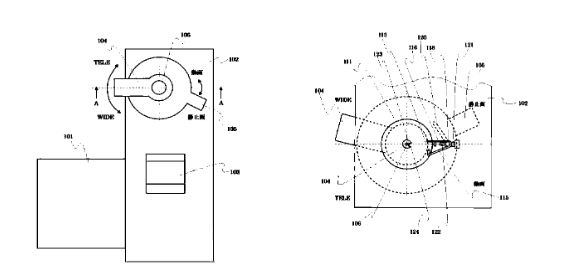
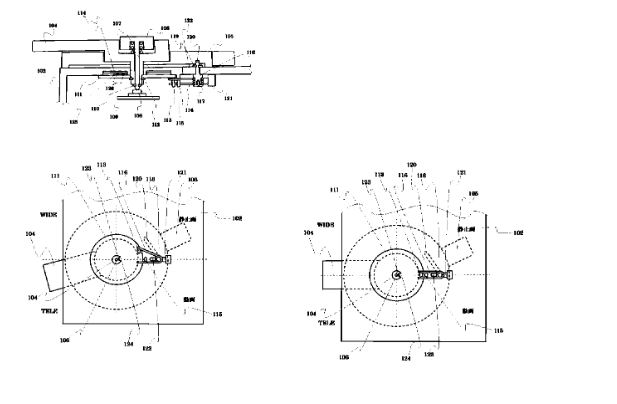
To enable the setting of operation force suitable for each of both modes of moving video/still picture with respect to a variable speed zoom lever.SOLUTION: A zoom load setting lever for performing rotation operation around the same fulcrum as a zoom lever is provided to serve also as a moving video/still picture mode switching lever, and load setting and moving video/still picture mode switching are linked together.
Also see – Canon Patent – DSLR Camera with Fixed Mirror
See more Canon Patents
STAY WITH ON FACEBOOK | TWITTER | GOOGLE+ to get live news and Canon rumors
By admin, on July 24th, 2017
The New Camera Exclusive – From translated patent details and images it’s very clear that makers of SLT technology still interested in SLT tech. A latest patent doc we have received.
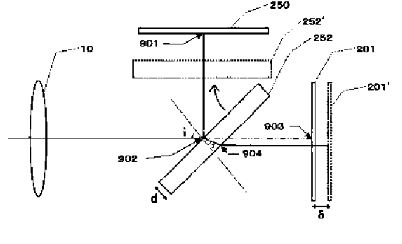
JP2017021175 (A) ― 2017-01-26
Application number: JP20150138247 20150710
Translated text from patent Description: To provide a single-lens reflex camera having a half-mirror configuration capable of performing image-plane AF, which offers a reduced release time lag by capturing an image without performing AF after mirror-up.SOLUTION: An image capturing device comprises an image capturing optical system, a matte screen on which an image from the image capturing optical system is formed, viewfinder means, an image sensor on which the image from the image capturing optical system is formed, focus detection means included in the image sensor, and a half-mirror. The focus detection means is configured to detect focus with the mirror down by performing ranging with a focus offset corresponding to a thickness of the half-mirror so that light is focused on the image sensor when the mirror is up.
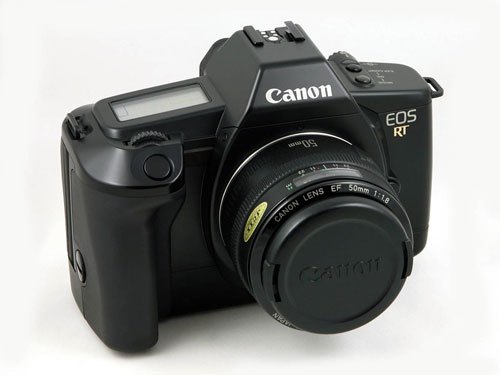
Pellicle Mirror – Back in 1989 Canon introduced first consumer SLR camera Canon EOS RT with Pellicle Mirror, actually the Pellicle mirrors based camera offers some of the advantages over the traditional SLR / DSLR camera, since When you DSLR (Canon, Nikon, Pentax) mirror flips up when you press the shutter button, it allow the light to pass through it to the sensor / flim of the camera, but the biggest problem of the moving mirror that it creates vibration, produces noise, creates a viewfinder blackout for a fraction of second and also limits the Camera burst speed capability.
A Pellicle mirror is actually a translucent film that will remain in fixed place at middle and always reflects some of the light up to the viewfinder and AF sensor, rest of the reaming light goes to the film / sensor.
Canon SLT patent isn’t new – June 1st, 2015 we have also published Canon SLT related patent. You can check it out here.
|
KEEP THIS BLOG ALIVE - Support New Camera Buy Canon Lenses, Buy Music CD or Digital Camera at amazon it helps this site, and you do not pay anything extra, it is just a way to help support this site.

|




















